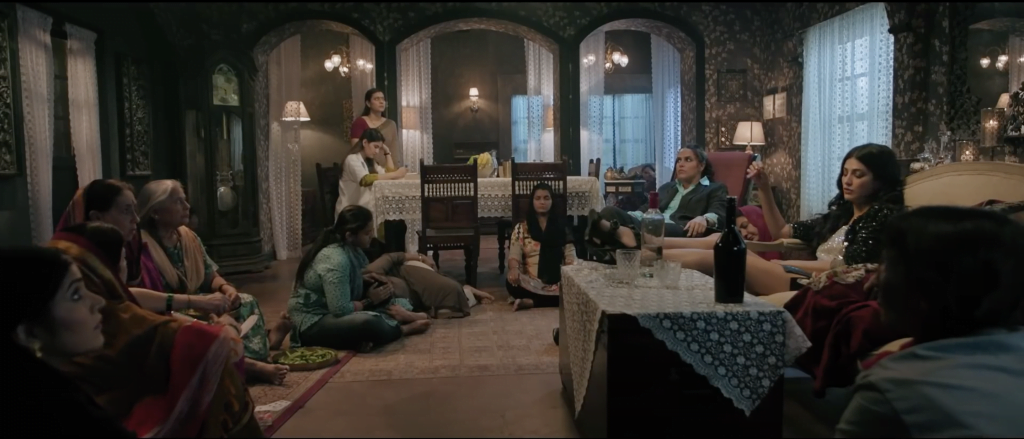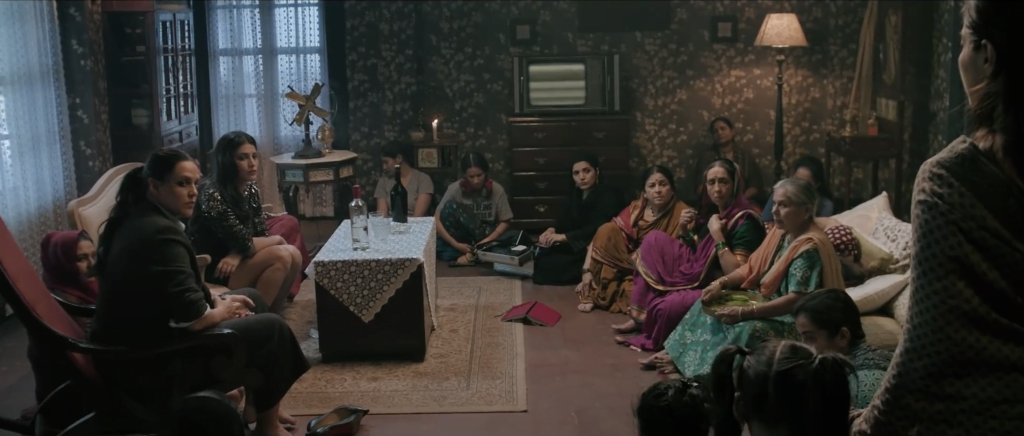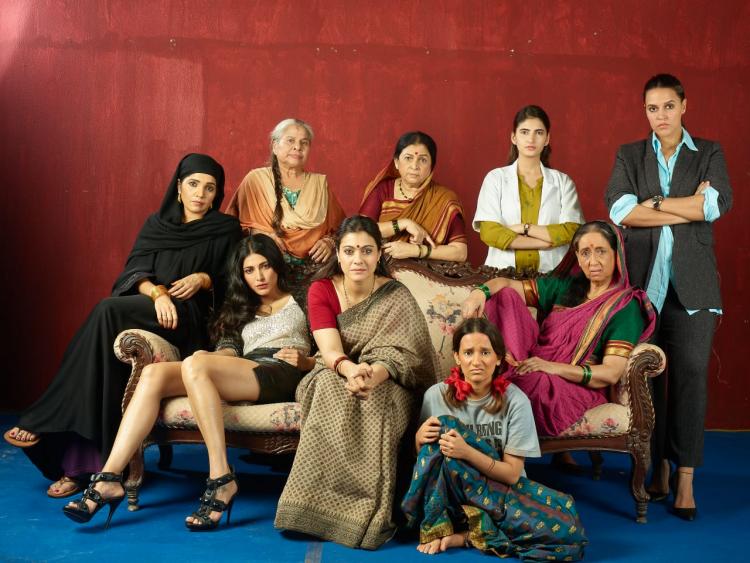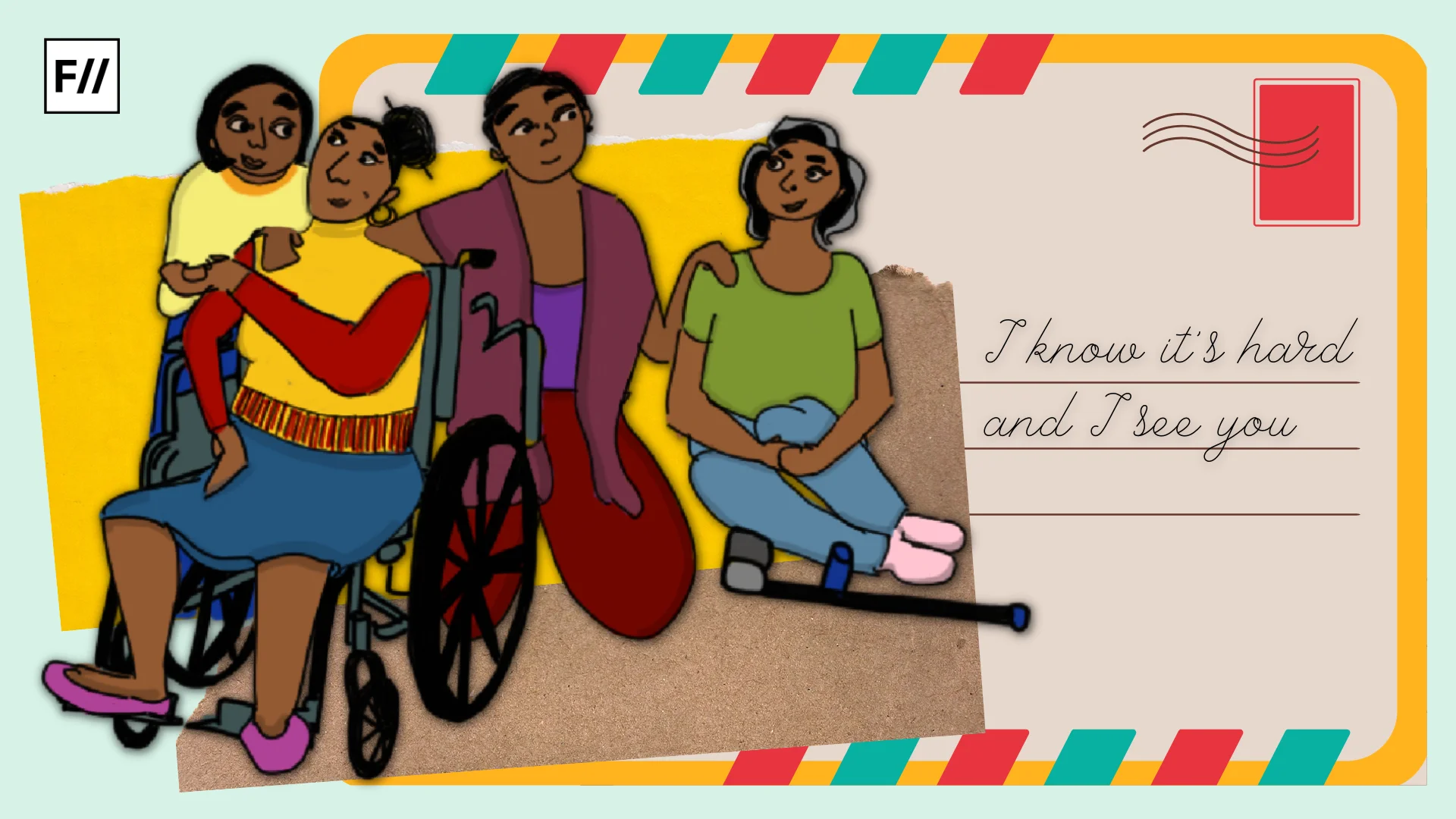Through a debate between nine rape victims, ‘Devi’ confronts the irony of rape culture in a country which worships women as goddesses. The multi-starrer, 15 minute short film, has an all-woman cast, director, and cinematographer keeping the sensitivity of the subject sacrosanct. Priyanka Banerjee, the director of the film, beautifully humanises the victims of rape compelling viewers to empathise and reflect deeply on women’s safety in India.
Devi is a roller-coaster of emotions which begins with a bunch of women doing banal activities on a sultry afternoon and ends with the silence of confronting child rape victims. The setting of the film is a tasteful vintage house dotted with women who starkly represent sundry communities – Marathi housewives, a burkha clad weaver, a corporate woman, an English speaking ‘modern’ woman, a speech-impaired teenager, an aspiring doctor, and the simple god worshiping figurehead of the pack. The diversity of the occupants of the house itself sends a powerful message – no woman, regardless of age, community, religion, state, marital status is safe from rapists.
The setting of the film is a tasteful vintage house dotted with women who starkly represent sundry communities – Marathi housewives, a burkha clad weaver, a corporate woman, an English speaking ‘modern’ woman, a speech-impaired teenager, an aspiring doctor, and the simple god worshiping figurehead of the pack.
The peace of the afternoon is only broken by the ringing of the doorbell. The women launch into an argument on whether the guest at the door should be welcomed into their safe haven, which was already brimming with more women than space allowed. The argument revolves around the inability for the women to live comfortably if they start providing shelter to every guest at the door. The very cause of argument makes the viewer realise the increasing number of rape cases in the country; one in every twenty-two minutes, as pointed out in Devi.
During the debate, the women start arguing the parameters based on which members of the house should be eliminated. It gives rise to the most disturbing trajectory of conversation. The women take turns to describe the gruesome detail of their death after being raped – strangulation, torture, mutilation, and even trauma. Naturally, no conclusion based on the mode of rape and death could be drawn. They further describe the relation they shared with the rapists.

From husbands to close relatives, co-workers to eve-teasers, the spectrum of men who inflicted the crime was so varied that it too could not be the grounds for elimination either. The rapists’ age also does not provide sound reasoning for selection. The bickering, transpiring in the most commonplace manner shakes the foundation of how we view rape in India. The compelling description entraps the viewer into an empathetic state as the universality of rape as a mode of oppression becomes abundantly clear.
Also read: The Media Needs To Stop Sympathising With Rapists | #GBVinMedia
The women, though victims themselves, are initially shown to display apathy towards the new arrival at their door. They represent every Indian who has internalised patriarchy and has systematically stopped questioning the status quo. While trying to fight for their place in the house, the women are insensitive towards each other, defying intersectionality to place their trauma over the other. Their self-realisation, however, dawns when Jyoti depicted by Kajol, brings in the new addition to the family – a child, barely knee-high with two ponytails, dressed in a frill frock.
The bickering, transpiring in the most commonplace manner shakes the foundation of how we view rape in India. The compelling description entraps the viewer into an empathetic state as the universality of rape as a mode of oppression becomes abundantly clear.
Devi captures the reeling state of women’s safety and the unprecedented rise in rapes in the country. The indifference of the courts is highlighted through startling statistics showing how Indian courts have over 100,000 pending rape cases which increases consistently since over 90 cases are reported every day. It not only covers the age-old feminist argument that it is not the superficial considerations like clothes and ideology that provokes rapes, but also the systemic issues which have institutionally enabled the rape culture to strengthen. It breaks down the common misconception that it is women who endorse pop-culture and wear ‘short clothes’ are ones who instigate violence against themselves.

Even though Devi aims to make the viewer squirm uncomfortably on their seats, it also plays heavily on stereotypes. Surely it achieves the mammoth task of sending a powerful message in a short time frame but fails in being inclusive. Stories of women are highlighted eliminating trans and queer people, sex workers, male victims, tribal women, conflict victims et al. The morality question remains ambiguously ominous in the plot treading on safer path, probably to attract a greater audience.
Also read: Dear Media, Use These New Stock Images To Depict Rape Instead! | #GBVinMedia
Priyanka Banerjee’s short film Devi is a heart breaking story which one should endure. Within a short period, the film covers tremendous ground in creating a more informed outlook towards rape.
Featured Image Source: The Bollywood Ticket
About the author(s)
Ananya Chhaochharia is a political junkie, teacher and intersectional feminist. When she isn't getting high planning electoral campaigns for political parties, she runs operations for a non-partisan youth organization in public leadership. Dismayed by the abeyance in information related to menstruation in rural India she founded Paint It Red, an organization that aims to empower women through knowledge.




